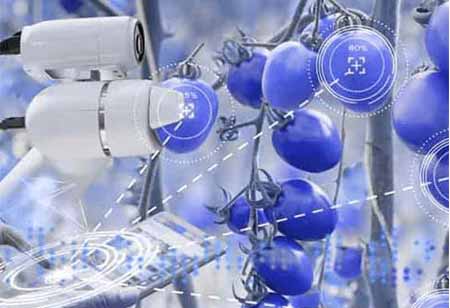Thank you for Subscribing to Agri Business Review Weekly Brief
How Hyperspectral Imaging Evaluates Salmon Maturity for Aquaculture
The Atlantic salmon farming industry manipulates smoltification, the physiological adaptation of young freshwater salmon to saltwater.

By
Agri Business Review | Friday, June 03, 2022
Stay ahead of the industry with exclusive feature stories on the top companies, expert insights and the latest news delivered straight to your inbox. Subscribe today.
A hyperspectral imaging system combines color and reflectivity to differentiate between juvenile and older salmon.
FREMONT, CA: The Atlantic salmon farming industry manipulates smoltification, the physiological adaptation of young freshwater salmon to saltwater. Lights and specialized food are used to initiate and regulate the generation of new fish for aquaculture. Verifying the completion of the smoltification procedure prevents the fish from dying when transferred from freshwater to saltwater.
Traditional methods include examining blood samples for chloride concentration after exposing fish to saltwater and analyzing gill tissue samples for the presence of ion-transporting enzymes. Observing the skin's color, texture, and light reflectance can also indicate whether or not smoltification has happened. These time-consuming studies conducted on individual fish from populations numbering in the hundreds of thousands and requiring expert interpretation may not accurately reflect the entire group.
A hyperspectral imaging method developed by researchers and reported in the article "Identification of spectral signature for in situ real-time monitoring of smoltification" combines color and reflectivity to distinguish between juvenile and adult salmon. This novel approach is efficient, does not rely on expert observation, and removes the risk of hurting juvenile fish that cannot tolerate saltwater during tests.
The experimental setup comprises a SPECIM hyperspectral camera with a 23 mm/f/2.4 lens and a SPECIM LabScanner tray. The initial portion of the investigation utilized conventional SPECIM halogen lamps. Concerned about the heat caused by the halogen lights, subsequent phases used the Lumia 5.2 LED array from CREE.
The application ran on a Shuttle SH110G PC with an Intel i7 processor, 16 GB D4 2400 memory, a solid-state SATA HD drive, and a BitFlow Karbon CL2 frame grabber.
The researchers compared hyperspectral data with the outcomes of tests conducted on blood and gill tissue samples taken from random fish samples from the same tank. 314 fish from three different production sites were evaluated.
The analysis of hyperspectral data consisted of four phases. Based on the results of the conventional analysis, the researchers designated each salmon's data as "parr" (juvenile) or "smolt" (mature). Next, a black-and-white image calibration eliminated lighting-related discrepancies. This ensured the accuracy of skin reflectance measurement results.
In step three, the hyperspectral data were evaluated on a wavelength range of 400 nm (the camera's lowest sensing limit) to 700 nm, avoiding higher wavelengths that the instability of the halogen lamps could have influenced in step one. A machine learning classifier was then used to search each image for spectral properties that distinguished a fish as either a parr or a smolt.
The ideal wavelengths for the classifier to distinguish between parr and smolt varied based on the testing location. This was related to variations in average water temperature, dissolved oxygen, water opacity and color, lighting, and feeding patterns. Overall, the classifier's accuracy in recognizing fish as parr or smolt was 90 percent.





